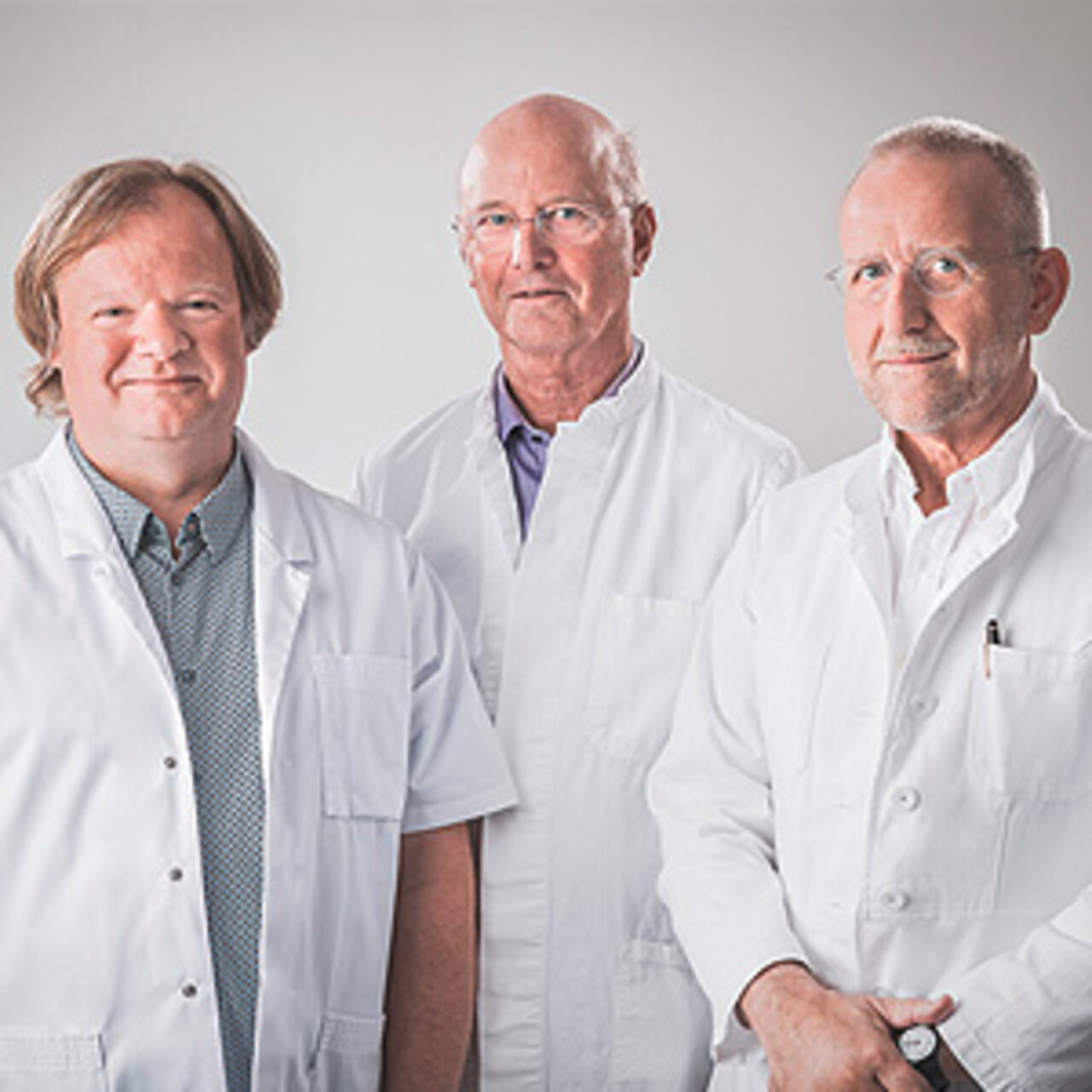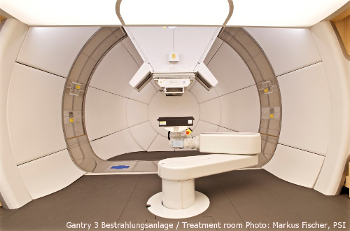Specialists in Lung cancer
14 Specialists found
Information About the Field of Lung cancer
How Does Lung Cancer Develop?
It is not clear how exactly bronchial carcinoma develops. The cells of the respiratory tract can regenerate. If they come into contact with harmful substances, they try to adapt, which can cause the surface cells of the airways to alter into surface cells that resemble the skin or produce more mucus.
If contact with the damaging substance is too long, these cells degenerate and attack the surrounding tissue. They also no longer listen to signals sent by the body. This leads to different lung cancer types, which are divided into a small-cell and a large-cell tumor form according to the kind of cells.
Causes of Lung Cancer
The leading cause of bronchial carcinoma is found in cigarette smoke. About 85% of cases are caused by it. Not only active smoking but also passive inhalation of the smoke leads to cell changes and even pathological degeneration of cells in the lung tract. Both the duration and the extent of cigarette consumption are decisive for the development of the tumor. The risk of developing lung cancer can be estimated by multiplying the number of packs smoked per day by the number of years of smoking (so-called pack-years). Thus, 40 pack-years results in a tenfold risk of cancer.
However, there are other triggers for bronchial carcinoma besides tobacco smoke. In particular, occupational exposure to carcinogenic substances such as asbestos, quartz, and nickel dust was among the causes. Fine dust and especially diesel exhaust fumes, also have an influence.
In recent years, the influence of infectious diseases such as EBV (Pfeiffer's glandular fever) and HPV (human papillomavirus, also responsible for cervical cancer) have also been discussed. Besides, a tumor can also develop in the scar tissue of the lung (for example, after inflammation or lung surgery).
As with many other types of cancer, lung cancer is considered to have an increased risk (approximately 2-3 times the risk) if one parent is affected (genetic disposition).
Lung Cancer Symptoms
Due to the excellent compensation mechanisms, symptoms in lung cancer usually appear relatively late. Besides, these are unspecific symptoms such as fever, cough, chest pain, hoarseness, and shortness of breath, which are often dismissed with a delayed cold.
Occurring of weight loss and blood in the sputum usually leads to a visit to a general practitioner. Unfortunately, these are often late symptoms in which the tumor has already spread beyond the organ and damaged the surrounding nerves (hoarseness and shortness of breath).
The tumor cell spread through the bloodstream (metastasis) leads to a wide variety of symptoms depending on the location of the metastasis. The brain, liver, adrenal glands (producing cortisone and adrenaline), and the bones (primarily the spine) are mainly affected.
How is Lung Cancer Detected?
The general practitioner or internist can suspect a tumor illness when talking to the patient based on the smoker's history, or occupational exposure to noxious substances (noxious agents are harmful substances), and the physical symptoms.
A radiologist is therefore consulted for further clarification. Suspicious foci can be detected in the area of the lungs, especially in the airways of the lungs (bronchial tubes) on X-ray images, which provide initial indications. However, further examinations are necessary for more detailed diagnosis.
Computer tomography of the upper body and abdomen are additionally carried out, which serves to estimate the spread of the tumor. Affected lymph nodes and suspicious lesions in organs such as the liver can be detected. A bronchoscopy, which means a camera is used to go through the trachea into the bronchial tubes, is carried out for an exact diagnosis. During this examination, a tissue sample can be taken with small forceps and evaluated by the pathologist. Metastases can be found throughout the body in a PET scan. Before a possible surgery is carried out, lung function and blood values must also be examined to indicate whether surgery is even possible.
Lung Cancer Therapy
The therapy of lung cancer depends on the type of tumor (small cell versus non-small cell), the size, and the infestation of other organs. In consultation with the oncologist (cancer specialist), the options available in the specific case are discussed in detail.
In principle, palliative therapy (palliative therapy, as healing, is no longer possible) is carried out in the case of non-operable tumors (which is the case in about 70% of small cell bronchial carcinoma). Both radiotherapy and chemotherapy are possible. The aim is to relieve pain, facilitate breathing, and improve the quality of life. Nevertheless, this therapy also has its side effects, such as inflammation of the heart muscles due to the high radiation dose. The advantages and disadvantages must be individually discussed with your doctor and weighed up.
If diagnosed early, the therapy of small cell lung carcinoma is carried out with the aim of healing. This usually involves polychemotherapy (chemotherapy consisting of various drugs). As a precautionary measure, the skull should also be irradiated, as the spread of tumor cells (metastasis) to the head occurs quite frequently. In this case, surgery is only carried out in exceptional circumstances (random findings during other surgeries, minimal tumor size, etc.).
If it is a non-small cell lung cancer, the therapy of choice is surgical removal (resection) of the tumor. Depending on the size of the tumor, parts of the lung, up to a whole lung lobe (the left lung consists of two lobes, the right one of three lobes), or a whole half of the lung is removed. If surgery is not possible for specific reasons (advanced age, reduced lung function), radiation therapy may be an alternative. In the case of larger tumors, radiation and/or chemotherapy may also be necessary. Palliative therapy is carried out in the same way as for small cell lung cancer.
Prognosis and Life Expectancy in Lung Cancer
The prognosis for bronchial carcinoma in advanced stages is unfortunate. Only one in five patients survive in five years. The reason for this is the late discovery of the disease due to missing and misinterpreted symptoms.
In this condition, usually, only pain-relieving (palliative) therapy is possible. If the tumor is discovered at an early stage, the chances of survival with successful treatment are comparatively high (approx. 50%).
In this case, follow-up examinations are essential. These include, among others, check-ups of specific tumor markers (which, however, cannot be used for early detection), blood values, and x-ray examinations in specified intervals.
Sources:
- www.awmf.org/leitlinien/detail/ll/020-007.html
- Arastéh, Keikawus; Baenkler, Hanns-Wolf : Innere Medizin. 2., vollst. überarb. und erw. Aufl. Stuttgart: Thieme 2009.
- Herold, Gerd: Innere Medizin. Köln, Eigenverlag 2012.
Medical Articles
Your benefits
If you have found a matching specialist, you can contact him/her directly and upload records if needed. And in case you need treatment, you can…
We will direct your request to the appropriate specialists
We are happy to assist you in choosing a specialist for your needs. The service of PRIMO MEDICO is always free, confidential and discreet for…
The treatment of scoliosis in transition - When is surgery necessary?
Scoliosis is a lateral deviation of the spine. This usually involves torsion of the individual trunk sections as well as a change in the side…
Specialists' Second Opition
Many people suffer from shoulder pain or hip problems. In this case, doctors quickly recommend surgical intervention. But is this really always…
High-tech against cancer: new treatment facility put into operation
At the Paul Scherrer Institute in Switzerland a new state-of-the art treatment facility, the so-called Gantry 3, has been put into operation.
Implants: "The Longer, the Better" Has Had Its Days
Ultra-short implants have a significantly better durability than expected by experts - with lower costs, treatment times, and complications.
Modern Prostheses for Natural Walking
The ankle joint is particularly susceptible to degeneration such as osteoarthritis. It has to bear the greatest weight of all joints in the body.
















![[Translate to English:] Zweitmeinung von Spezialisten [Translate to English:] Zweitmeinung von Spezialisten](/fileadmin/user_upload/Zweitmeinung-von-Spezialisten_350px.jpeg)


